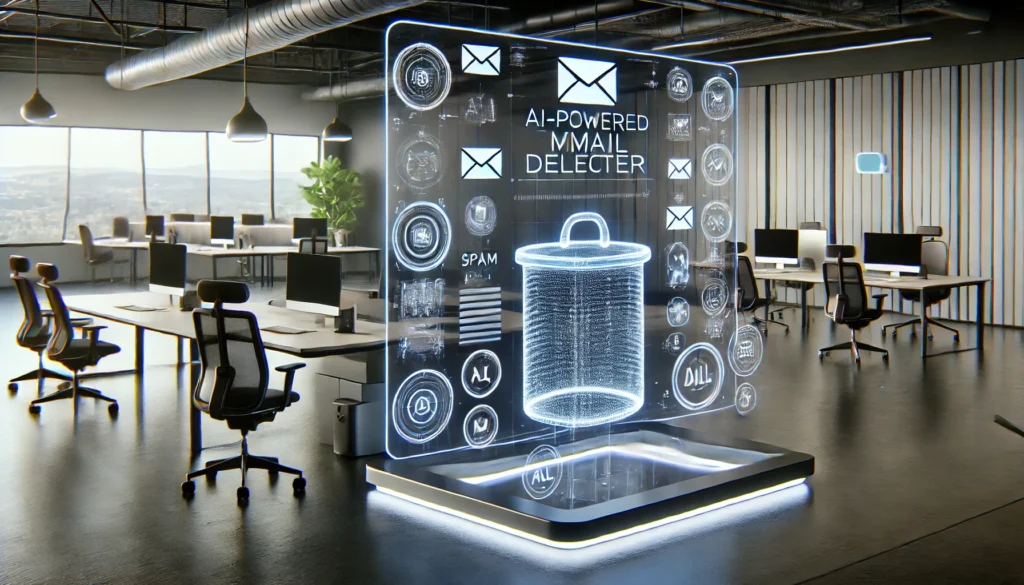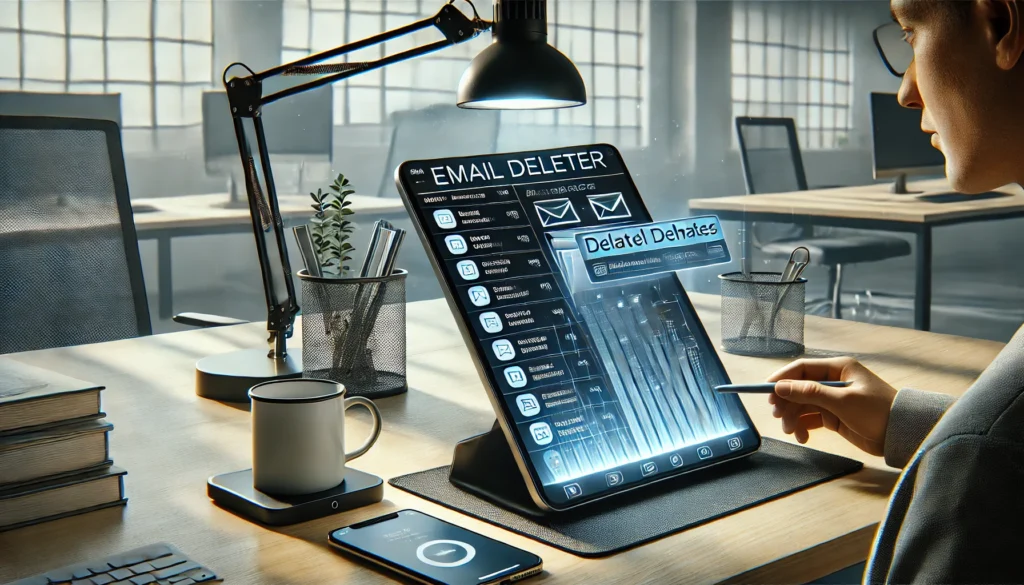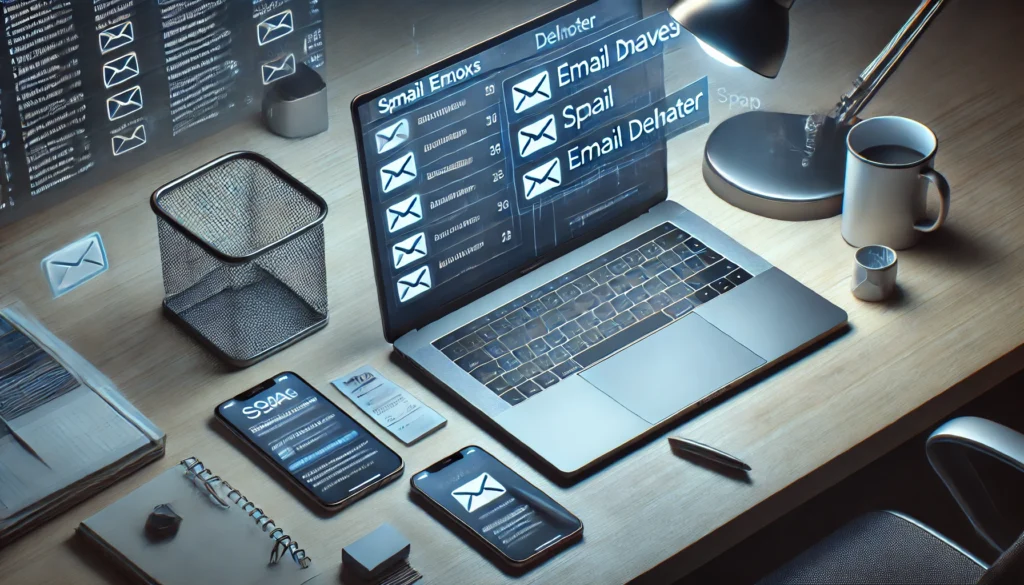Spam emails are unsolicited messages sent in bulk, often for advertising purposes. They can range from annoying promotions to dangerous phishing scams. Recognizing the characteristics of spam is the first step towards effectively managing it. These messages often contain suspicious links, attachments, or requests for personal information. By learning to identify these elements, you can better protect yourself from the potential threats posed by spam emails.
You may also like: Top Email Deleters for Inbox Management
Common Types of Spam Emails
Spam emails can be divided into several categories, each with its own characteristics. Promotional emails typically try to sell products or services and are often sent without the recipient’s consent. Phishing scams, on the other hand, are more dangerous as they attempt to trick users into providing personal information such as passwords or credit card numbers. Chain emails that encourage forwarding can also be considered spam, as they clutter inboxes with unnecessary content.
Identifying Spam Characteristics
Recognizing spam involves understanding the red flags that often accompany these emails. Unsolicited emails from unknown senders, messages with numerous spelling errors, or emails that create a sense of urgency by claiming your account has been compromised are common indicators of spam. Additionally, emails requesting sensitive information or containing suspicious attachments should be treated with caution.

The Risks of Engaging with Spam
Interacting with spam emails can have significant consequences. Clicking on links in phishing emails can lead to identity theft, while downloading attachments can introduce malware to your device. Moreover, responding to spam emails or clicking on unsubscribe links can confirm the validity of your email address to spammers, leading to an increase in unwanted emails.
How to Block Spam Emails in Gmail
Blocking a Specific Sender
Blocking a specific sender is one of the most straightforward methods to stop spam emails from cluttering your inbox. To block a sender in Gmail, open an email from the sender you wish to block. Click on the three vertical dots in the top-right corner of the email window and select “Block Sender’s Name.” This action will ensure that future messages from this sender are directed to your spam folder, effectively reducing inbox clutter.
Step-by-Step Guide to Blocking Senders
Blocking a sender in Gmail involves a simple process. After opening the email from the unwanted sender, look for the options menu represented by three vertical dots. This menu provides various options, including the ability to block the sender. Once blocked, all future emails from this sender will bypass your inbox and go directly to the spam folder, keeping your primary inbox uncluttered.
Understanding the Impact of Blocking
Blocking a sender does not notify them that they have been blocked, maintaining your privacy. This feature is particularly useful for dealing with persistent spam from the same source. By understanding this impact, you can confidently use blocking as a tool to manage your email effectively without worrying about retaliation from the sender.
Managing Your Blocked Senders List
Over time, you may want to review or edit your list of blocked senders. Gmail allows you to manage this list easily by accessing the “Filters and Blocked Addresses” tab in your settings. Here, you can unblock senders if needed or add new addresses to your blocked list, ensuring your email management remains flexible and under control.
Creating Filters to Avoid Spam
Filters are a powerful tool in Gmail that allows you to manage incoming emails based on specific criteria. To create a filter, click on the gear icon in Gmail and select “See all settings.” Navigate to the “Filters and Blocked Addresses” tab, then click “Create a new filter.” Enter the criteria for the filter, such as the sender’s email address or keywords often found in spam messages. Once the filter is set, choose the action you’d like Gmail to take, such as sending these emails directly to the trash.
Designing Effective Filters
When designing filters, consider the specific characteristics of the spam emails you wish to block. This could include specific words in the subject line, certain email domains, or even language used within the email body. By tailoring filters to these characteristics, you can ensure they effectively capture unwanted emails without affecting legitimate communication.
Automating Email Management
Filters not only help in blocking spam but also automate your email management processes. By setting criteria for emails to be labeled, archived, or deleted automatically, you save time and maintain a cleaner inbox. This automation is particularly beneficial for users who receive a high volume of emails daily, allowing for more efficient email triage.

Reviewing and Adjusting Filters
Regularly reviewing and adjusting your filters ensures they remain effective. Over time, the nature of spam emails can change, requiring updates to your filters. By periodically checking your filter criteria, you can adapt to these changes and continue enjoying a spam-free inbox experience.
Using Gmail’s Built-in Spam Features
Gmail comes equipped with robust spam detection algorithms that automatically identify and filter spam emails. However, it’s important to occasionally review your spam folder to ensure legitimate emails haven’t been mistakenly categorized. If you find an email that shouldn’t be in the spam folder, mark it as “Not spam” to improve Gmail’s future filtering accuracy.
The Role of Machine Learning in Spam Detection
Gmail’s spam detection relies heavily on machine learning algorithms. These algorithms analyze email patterns, content, and sender behavior to identify potential spam. By constantly learning from the vast number of emails processed daily, these systems become more adept at distinguishing between genuine and unwanted emails.
Enhancing Spam Detection with User Input
User input plays a crucial role in refining Gmail’s spam detection. When users mark emails as spam or not spam, they provide valuable feedback to the system. This feedback helps improve the accuracy of spam filters over time, ensuring that legitimate emails are not mistakenly categorized and that spam is effectively blocked.
Regularly Checking Your Spam Folder
While Gmail’s spam filters are highly effective, they are not infallible. Regularly checking your spam folder allows you to rescue important emails that may have been incorrectly marked as spam. By doing so, you not only recover these emails but also contribute to improving the accuracy of Gmail’s filters through your feedback.
Advanced Techniques to Combat Spam
Leveraging Third-Party Tools
Several third-party applications can enhance Gmail’s spam-blocking capabilities. Tools like Clean Email or Unroll.me offer advanced filtering options and the ability to unsubscribe from unwanted mailing lists. These applications can be particularly useful for users who receive a high volume of spam or find Gmail’s native features insufficient.
Popular Third-Party Spam Solutions
There are numerous third-party solutions available that complement Gmail’s spam-blocking capabilities. Applications like SpamDrain, MailWasher, and SaneBox offer additional layers of protection and customizable filtering options. These tools are designed to integrate seamlessly with Gmail, providing users with enhanced email management capabilities.
Integrating Third-Party Tools with Gmail
Integrating third-party tools with Gmail is typically straightforward. Most applications offer step-by-step guides to link your Gmail account, allowing them to analyze and filter your emails. Once integrated, these tools work alongside Gmail’s native features, providing an additional level of spam protection and email organization.
Evaluating the Effectiveness of Third-Party Tools
When choosing third-party tools, it’s important to evaluate their effectiveness and user reviews. Consider the features offered, such as advanced spam detection, unsubscribe options, and user interface ease-of-use. By selecting tools that align with your email management needs, you can enhance your ability to combat spam effectively.
Utilizing Gmail’s Blacklist Feature
For users dealing with persistent spam from specific senders, Gmail’s blacklist feature can be an effective solution. By adding unwanted email addresses to your blacklist, you ensure these emails are automatically deleted or directed to your spam folder. This feature is particularly useful for blocking domain-based spam, where multiple addresses from the same domain send spam emails.
Setting Up a Blacklist in Gmail
Creating a blacklist in Gmail involves setting filters that match unwanted email addresses or domains. By specifying these criteria, you can ensure that emails from blacklisted sources are automatically routed to the spam folder or deleted. This proactive approach to email management helps maintain a cleaner, more organized inbox.
Managing Blacklisted Email Addresses
Regularly reviewing and updating your blacklist is essential for maintaining its effectiveness. As new spam sources emerge, adding them to your blacklist ensures ongoing protection. Additionally, periodically checking your blacklist allows you to remove addresses that no longer pose a threat, keeping your email management system up-to-date.
The Benefits of Blacklisting Domains
Blacklisting entire domains can be a powerful strategy for dealing with spam from multiple addresses within the same organization. This approach is particularly useful for blocking spam from domains known for sending bulk unsolicited emails. By targeting domains rather than individual addresses, you simplify the process of managing spam and improve your inbox’s cleanliness.
Preventing Spam at the Source
Taking a proactive approach to prevent spam can significantly reduce the number of unwanted emails you receive. Be cautious when sharing your email address online and consider using a secondary email for non-essential sign-ups. Additionally, regularly updating your email password and enabling two-factor authentication can enhance your email security, preventing unauthorized access that could lead to increased spam.

Best Practices for Email Address Management
Managing your email address effectively can prevent spam before it reaches your inbox. Avoid sharing your primary email address on public forums or websites and use a secondary address for activities prone to spam, such as online shopping or signing up for newsletters. By controlling where your email address is shared, you can reduce the likelihood of it being targeted by spammers.
Strengthening Your Email Security
Enhancing your email security is crucial in preventing unauthorized access that could lead to spam. Regularly updating your email password and using strong, unique passwords for each account can help protect your email from being compromised. Additionally, enabling two-factor authentication adds an extra layer of security, making it more difficult for hackers to access your account.
Utilizing Temporary Email Addresses
Temporary email addresses can be a valuable tool in preventing spam. These addresses are designed for short-term use, allowing you to receive emails without exposing your primary address. When signing up for services or websites that may result in spam, using a temporary email address can shield your primary account from unwanted emails.
The Future of Email Security
As technology evolves, so too do the tactics employed by spammers. Staying informed about the latest developments in email security is essential for effectively managing spam. Advancements in artificial intelligence and machine learning are being integrated into email platforms, promising improved spam detection and filtering capabilities. These innovations, coupled with user vigilance, will play a crucial role in the ongoing battle against spam.
The Role of Artificial Intelligence in Email Security
Artificial intelligence is transforming the landscape of email security. By analyzing vast amounts of data, AI systems can identify patterns and anomalies that indicate spam, improving detection rates. Machine learning models continuously adapt to new spam tactics, making email platforms like Gmail more effective at filtering unwanted emails over time.
Emerging Email Security Technologies
Beyond AI, new technologies are emerging to enhance email security. Blockchain technology, for example, holds potential for verifying the authenticity of emails and preventing spoofing. As these technologies develop, they promise to offer users even greater protection against the evolving tactics of spammers, contributing to a more secure email environment.
The Importance of Staying Informed
Staying informed about the latest email security trends is vital for maintaining a spam-free inbox. As spammers develop new tactics, being aware of these changes allows you to adapt your strategies accordingly. Regularly updating your knowledge of email security best practices ensures you remain protected against the latest threats, empowering you to manage spam more effectively.
Conclusion
Managing spam emails in Gmail requires a combination of strategic blocking, effective use of filters, and leveraging Gmail’s built-in features. By taking the time to implement these strategies, you can maintain a clean and organized inbox, free from the clutter of unwanted emails. Staying informed about email security trends and advancements will further empower you to combat spam effectively. Embrace these practices, and enjoy a more streamlined and efficient email experience.
Further Reading:
How to block someone’s email address on Gmail
Important Note: The information contained in this article is for general informational purposes only, and should not be construed as health or medical advice, nor is it intended to diagnose, prevent, treat, or cure any disease or health condition. Before embarking on any diet, fitness regimen, or program of nutritional supplementation, it is advisable to consult your healthcare professional in order to determine its safety and probable efficacy in terms of your individual state of health.
Regarding Nutritional Supplements Or Other Non-Prescription Health Products: If any nutritional supplements or other non-prescription health products are mentioned in the foregoing article, any claims or statements made about them have not been evaluated by the U.S. Food and Drug Administration, and such nutritional supplements or other health products are not intended to diagnose, treat, cure, or prevent any disease.


